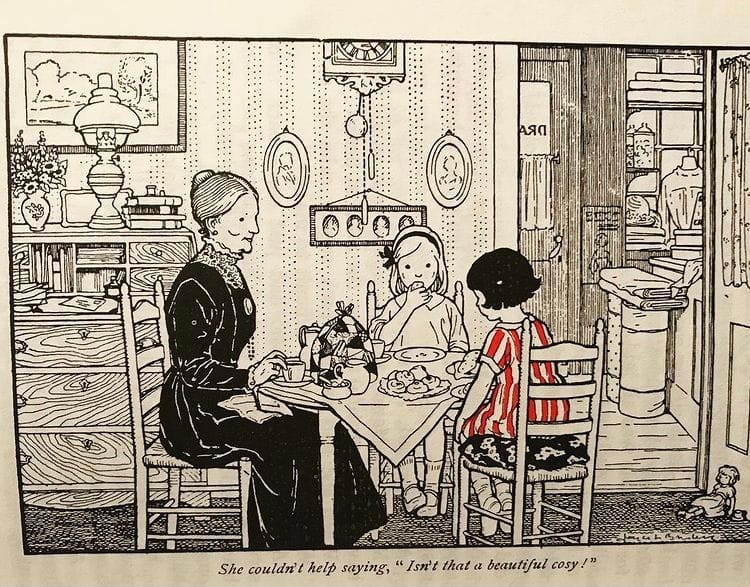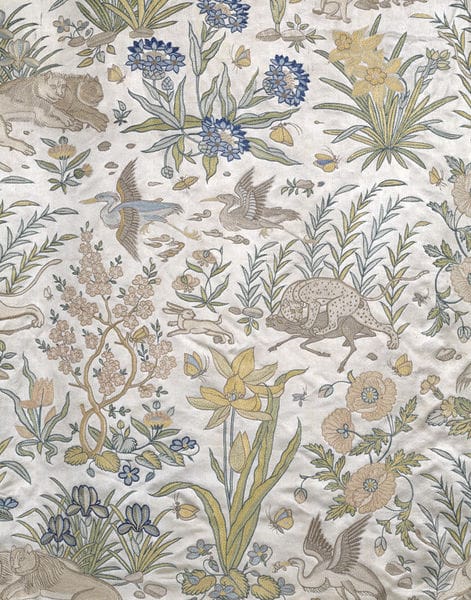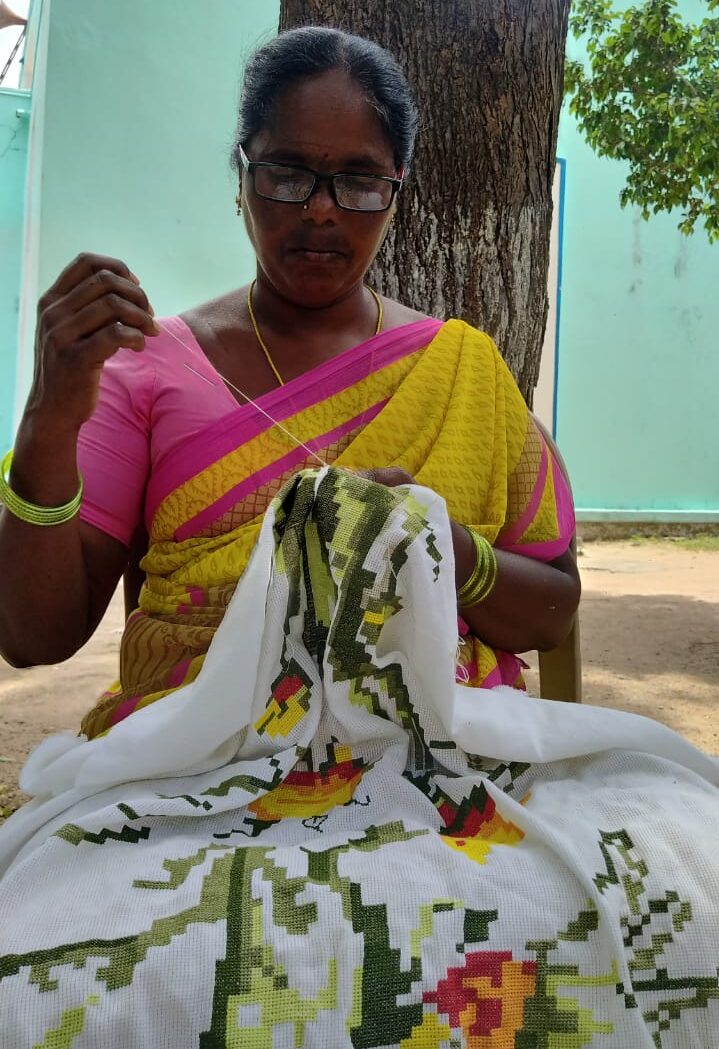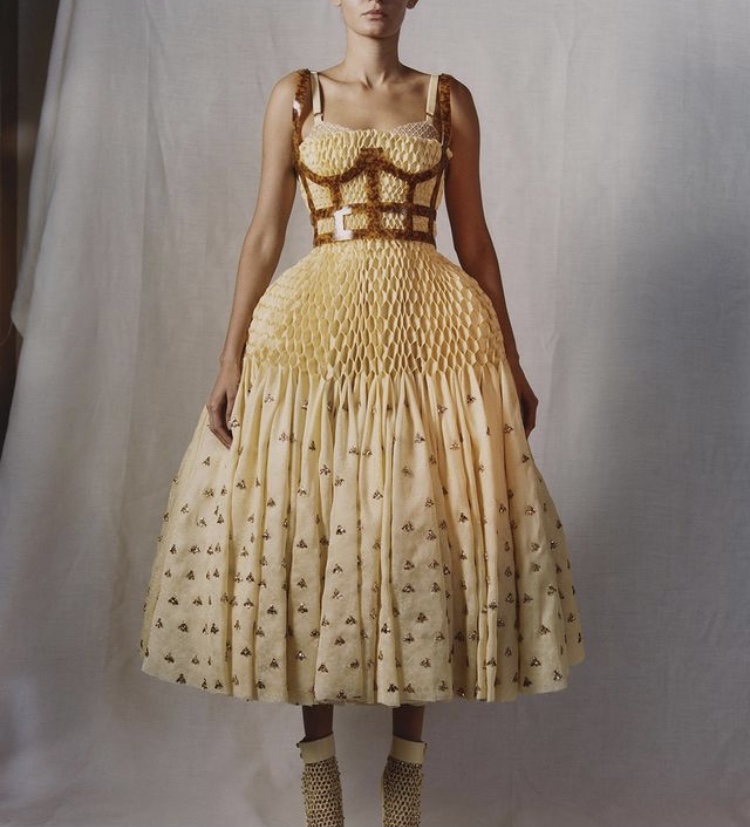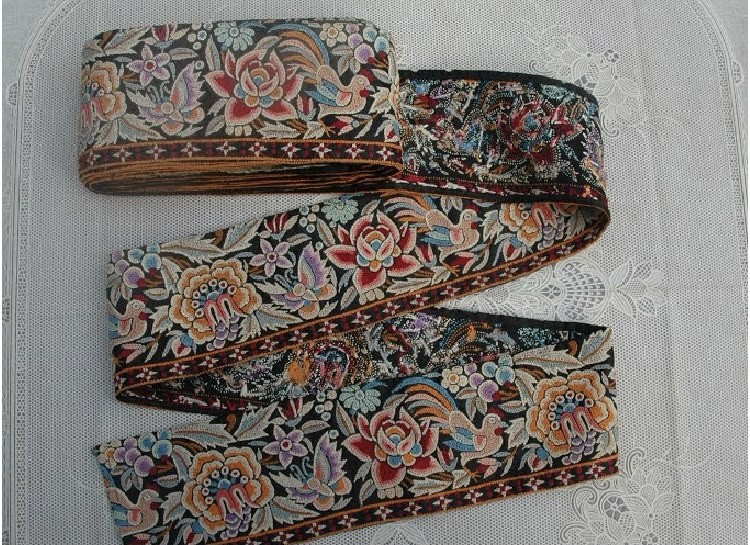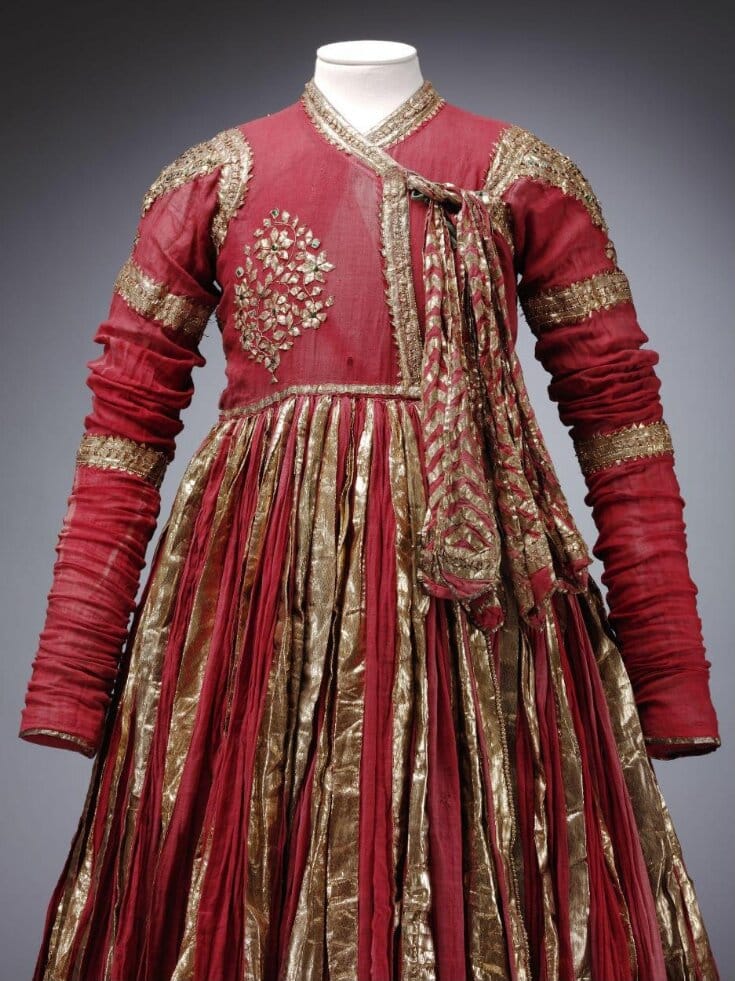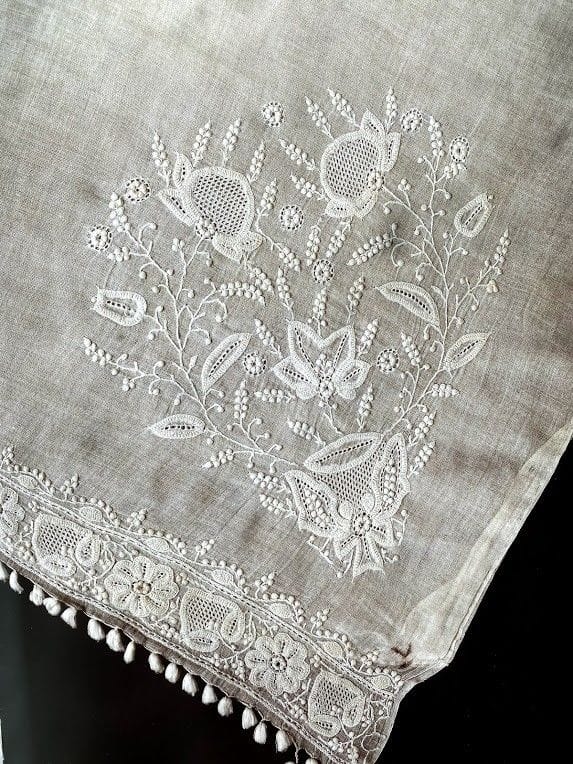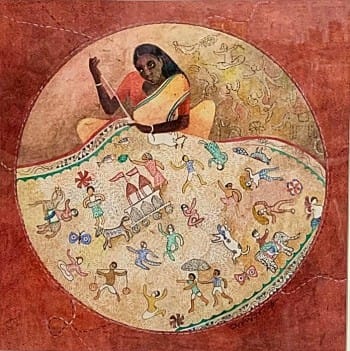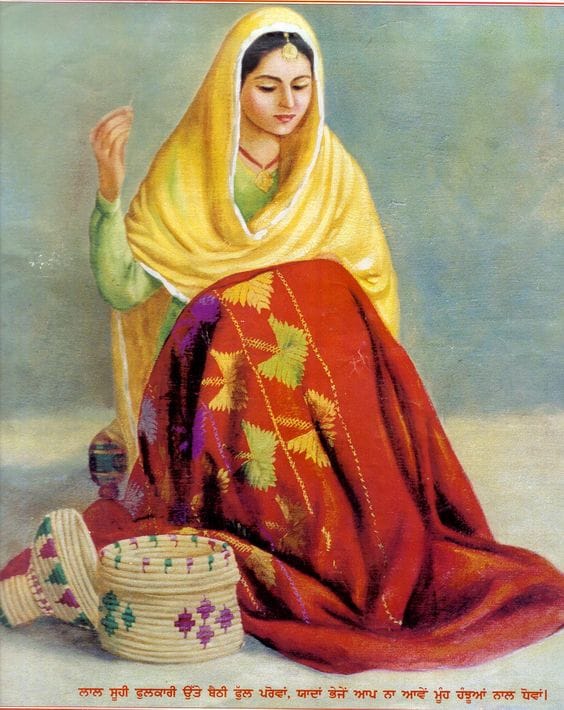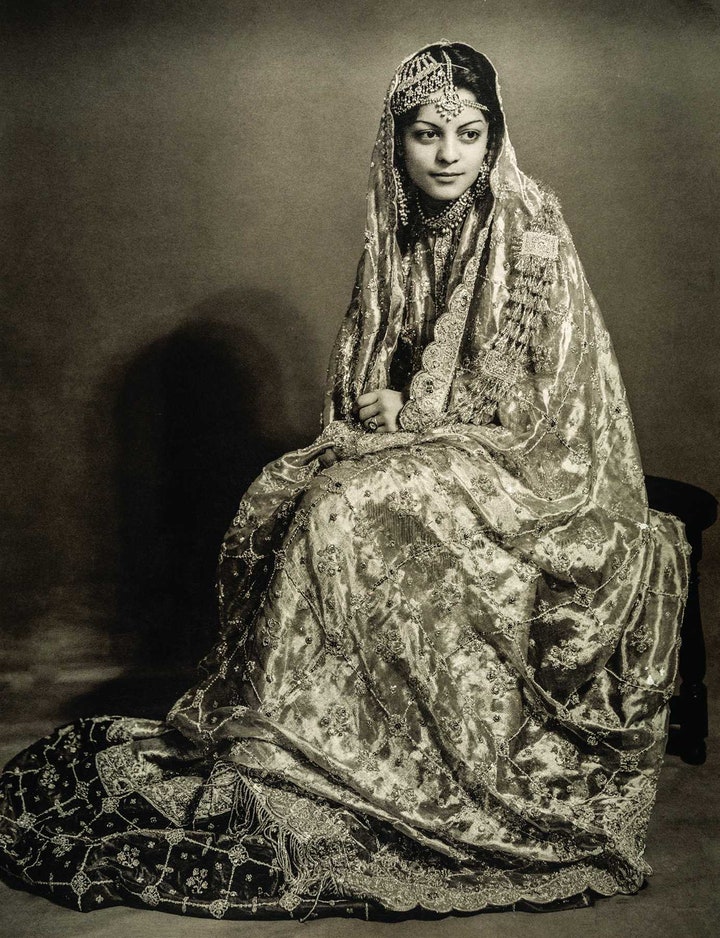18 Sep Embroidery as Art, Painting with the Needle
[vc_row css_animation="" row_type="row" use_row_as_full_screen_section="no" type="full_width" angled_section="no" text_align="left" background_image_as_pattern="without_pattern" css=".vc_custom_1632013352071{padding-right: 15px !important;}" z_index=""][vc_column width="1/2" offset="vc_col-xs-12"][vc_column_text]Embroidery As Art: Last week, I attended Shobha Broota's new show, where she used techniques like crochet and knitting to create unique art. This is, fortunately, a growing trend, but embroidery as art is still a problem area, being associated as it is with women's work, one that is coming into its own, though. To take an educated look at the history, we will have to go back to the genesis of needlework.14 Sep Cross-Stitch, A Gorgeous Embroidery developed from ‘X’ Stitches
Posted at 01:37h in Art, Artisan, Culture, DESIGN, Embroidery Series, History, Sustainability, Technique by Nidhi Garg 0 Comments
[vc_row css_animation="" row_type="row" use_row_as_full_screen_section="no" type="full_width" angled_section="no" text_align="left" background_image_as_pattern="without_pattern" css=".vc_custom_1631589941015{padding-right: 15px !important;}" z_index=""][vc_column width="1/3" css=".vc_custom_1631800168153{padding-right: 15px !important;}" offset="vc_col-xs-12"][vc_single_image image="4741" img_size="full" add_caption="yes" qode_css_animation=""][/vc_column][vc_column width="2/3" offset="vc_col-xs-12"][vc_column_text]Cross-Stitch - The inspiration for this article came from our cross-stitch expert Shobha, who joined as our first full-time cross-stitch artisan in June 2021. Shobha has been practicing this craft for the past 17 years. When she was in her twenties, she joined the training group led by father, Colombus, and has never looked back. The crafts were introduced to her village by father Colombus almost 70 years before. Father Columbus visited India through a missionary and trained women in more than 25 villages.10 Aug Story of Smocking, An Embroidery Technique to Gather Fabric to Create Stretch
Posted at 17:40h in Art, Artisan, Culture, DESIGN, Embroidery Series, History, Technique by Mira Gupta 0 Comments
[vc_row css_animation="" row_type="row" use_row_as_full_screen_section="no" type="full_width" angled_section="no" text_align="left" background_image_as_pattern="without_pattern" css=".vc_custom_1628630421216{padding-right: 15px !important;}" z_index=""][vc_column width="1/2" offset="vc_col-xs-12"][vc_column_text]Smocking: Those of us who grew up in the 1960s and the decades before then have all worn gingham dresses, very often with smocking. I know that I associate smocking exclusively with dresses for little girls. But that's not how the craft started. In a reversal of timelines from most forms of embroidery, which have been the province of the elite, smocking began as a means to render peasant clothing practical. And this is what makes it unique among all the forms of embroidery. Embroidery Series by Marasim02 May Lyrical Expression of Nature on Fabric – Gara Embroidery
[vc_row css_animation="" row_type="row" use_row_as_full_screen_section="no" type="full_width" angled_section="no" text_align="left" background_image_as_pattern="without_pattern" css=".vc_custom_1619985119265{padding-right: 15px !important;}" z_index=""][vc_column offset="vc_col-xs-12" css=".vc_custom_1619981845491{padding-right: 15px !important;}"][vc_column_text]Gara Embroidery A study of textile or craft form becomes doubly rewarding when it amalgamates history and culture, not just from one geography but across nations and histories. Nothing exemplifies this maxim more than the Parsi Gara. Its intricately embroidered yards of the fabric brings together Persia, Europe, India, and China.29 Apr Gota Work or Lappe Ka Kaam – Gold Ribbon Embroidery from India
Posted at 16:13h in Artisan, Culture, DESIGN, Embroidery Series, History, Sustainability, Technique by Nidhi Garg 0 Comments
[vc_row css_animation="" row_type="row" use_row_as_full_screen_section="no" type="full_width" angled_section="no" text_align="left" background_image_as_pattern="without_pattern" css=".vc_custom_1619725349713{padding-right: 15px !important;}" z_index=""][vc_column offset="vc_col-xs-12"][vc_column_text]Gota Work or Lappe Ka KaamThis past year allowed us to work with many embroidery techniques from India, which are traditionally practised as embroideries of gold. A few days ago, when we wrote about one such Embroidery of Gold- Zardozi Embroidery, we received a great response. Therefore we feel encouraged to share more on Indian embroidery techniques from the genre of 'gold.' One such technique is Gota Work or Lappe Ka Kaam.
23 Apr White on White Embroidery of India- Chikankari Embroidery
Posted at 16:24h in Art, Artisan, Embroidery Series, History, Sustainability, Technique by Mira Gupta 0 Comments
[vc_row css_animation="" row_type="row" use_row_as_full_screen_section="no" type="full_width" angled_section="no" text_align="left" background_image_as_pattern="without_pattern" css=".vc_custom_1619207173048{padding-right: 15px !important;}" z_index=""][vc_column offset="vc_col-xs-12"][vc_column_text]Chikankari Embroidery from India - As a child growing up in Lucknow in the 1960s, I recall being dragged along to the stores when my mother and aunts shopped. Much to my boredom. Except when we went to the chikankari shops. Even as a child, I found the gossamer tenderness and transparency of the craft fascinating, and I'm not alone in this. In 1903, George Watt described it as "the most artistic and delicate form of the indigenous needlework of India." Laila Tyabji compares it to a dragonfly wing. 05 Apr Kantha Embroidery born out of Recycling and Upcycling Traditions
Posted at 15:41h in Artisan, Culture, DESIGN, Embroidery Series, History, Technique by Mira Gupta 0 Comments
[vc_row css_animation="" row_type="row" use_row_as_full_screen_section="no" type="full_width" angled_section="no" text_align="left" background_image_as_pattern="without_pattern" css=".vc_custom_1618453133623{padding-right: 15px !important;}" z_index=""][vc_column offset="vc_col-xs-12"][vc_column_text]Kantha Embroidery: We speak so much nowadays of recycling and upcycling as a means of repairing what we have done to the environment and our ecology through thoughtless consumption. But in several cultures, and particularly Japan and India, upcycling has existed historically. [/vc_column_text][vc_empty_space][/vc_column][/vc_row][vc_row css_animation="" row_type="row" use_row_as_full_screen_section="no" type="full_width" angled_section="no" text_align="left" background_image_as_pattern="without_pattern" css=".vc_custom_1618453133623{padding-right: 15px !important;}" z_index=""][vc_column offset="vc_col-xs-12"][vc_column_text][caption id="attachment_3869" align="alignleft" width="300"]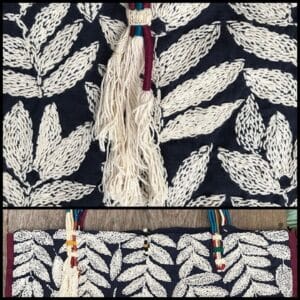 Sashiko from Japan. So similar to Kantha. Picture Rit Maes[/caption]Japan, of course, has her Sashiko and Boro. And India has Kantha. I recall when my son was born, our Bengali help embroidered his first nappies using soft used cloth and beautiful Kantha, something I still treasure.
Sashiko from Japan. So similar to Kantha. Picture Rit Maes[/caption]Japan, of course, has her Sashiko and Boro. And India has Kantha. I recall when my son was born, our Bengali help embroidered his first nappies using soft used cloth and beautiful Kantha, something I still treasure. 28 Mar Phulkari Embroidery of the Women of Punjab
Posted at 15:01h in Artisan, Culture, DESIGN, Embroidery Series, History, Sustainability, Technique by Mira Gupta 1 Comment
[vc_row css_animation="" row_type="row" use_row_as_full_screen_section="no" type="full_width" angled_section="no" text_align="left" background_image_as_pattern="without_pattern" css=".vc_custom_1616956674552{padding-right: 15px !important;}" z_index=""][vc_column offset="vc_col-xs-12"][vc_column_text]If there is any embroidery that is solely in the realm of women, it is phulkari, and that too the women of Punjab. Translating to 'flower work,' it is vital in the history and culture of its state of origin, steeped in its history, its customs, and rites of passage ceremonies. More than any other embroidery of India, it is significant- less for commercial reasons and more for the insight it offers into women's lives historically. 24 Mar Embroidery of Gold- Zardozi Embroidery
Posted at 00:27h in Art, Artisan, Culture, Embroidery Series, History, Technique by Mira Gupta 4 Comments
[vc_row css_animation="" row_type="row" use_row_as_full_screen_section="no" type="full_width" angled_section="no" text_align="left" background_image_as_pattern="without_pattern" css=".vc_custom_1616300712552{padding-right: 15px !important;}" z_index=""][vc_column offset="vc_col-xs-12"][vc_column_text]Zardozi Embroidery: There is something about embroidery that has held the world in thrall in all of recorded history. Is it the human urge to beautify and improve? Is it a stress buster? Whatever the reasons, India probably stands at the forefront of the world in terms of both the variety and the complexity of its embroidery traditions. Many of the embroideries found on garments on the international catwalks are developed in India, though this may not be known or acknowledged. - 1
- 2


